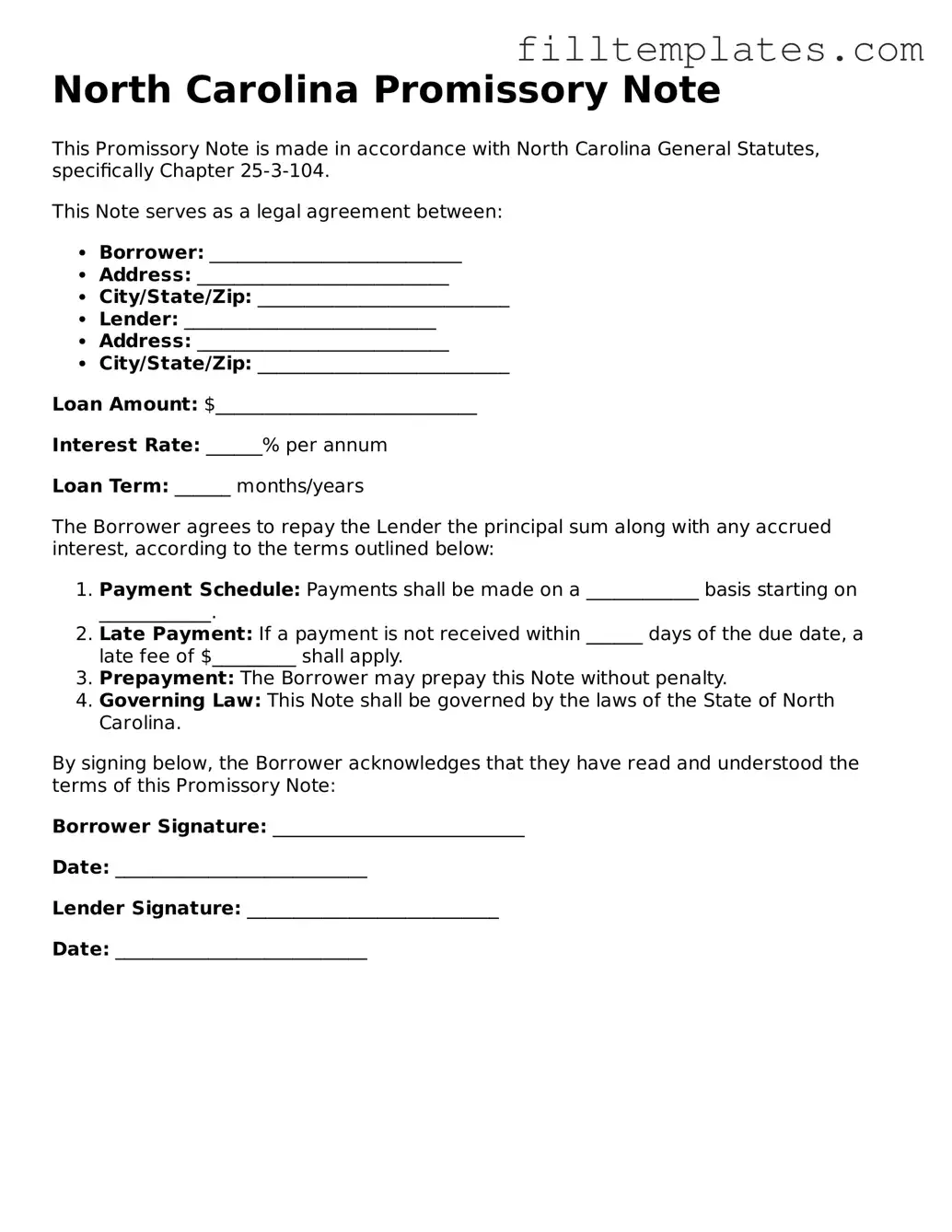North Carolina Promissory Note
This Promissory Note is made in accordance with North Carolina General Statutes, specifically Chapter 25-3-104.
This Note serves as a legal agreement between:
- Borrower: ___________________________
- Address: ___________________________
- City/State/Zip: ___________________________
- Lender: ___________________________
- Address: ___________________________
- City/State/Zip: ___________________________
Loan Amount: $____________________________
Interest Rate: ______% per annum
Loan Term: ______ months/years
The Borrower agrees to repay the Lender the principal sum along with any accrued interest, according to the terms outlined below:
- Payment Schedule: Payments shall be made on a ____________ basis starting on ____________.
- Late Payment: If a payment is not received within ______ days of the due date, a late fee of $_________ shall apply.
- Prepayment: The Borrower may prepay this Note without penalty.
- Governing Law: This Note shall be governed by the laws of the State of North Carolina.
By signing below, the Borrower acknowledges that they have read and understood the terms of this Promissory Note:
Borrower Signature: ___________________________
Date: ___________________________
Lender Signature: ___________________________
Date: ___________________________
